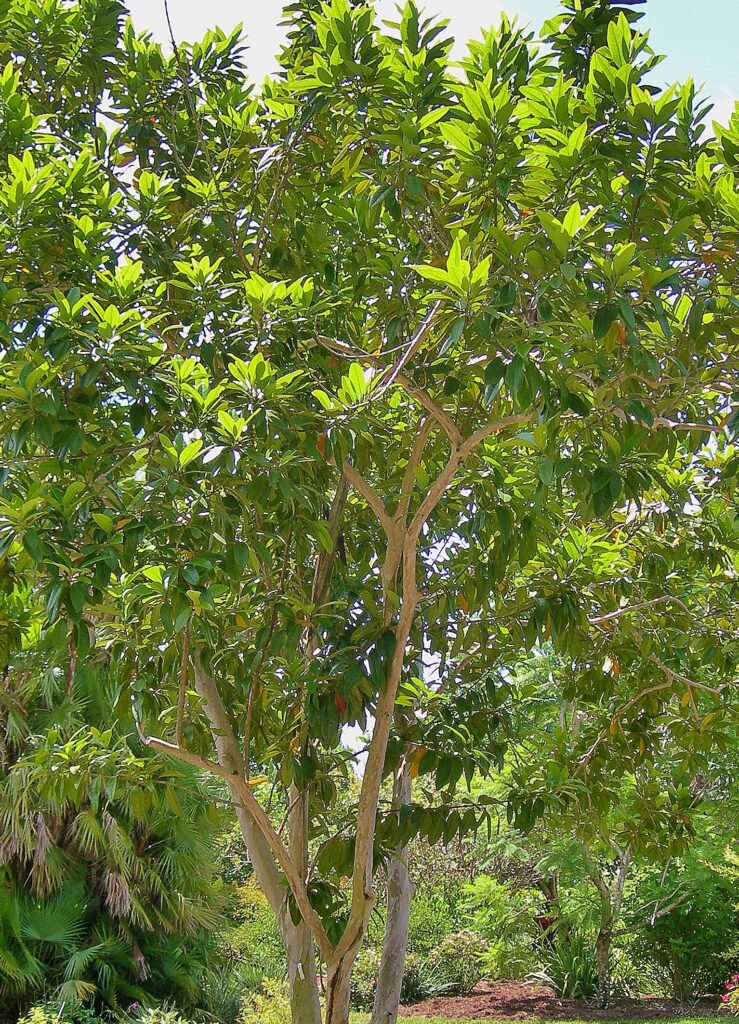It’s a lovely time of year to get outside and gift the planting of a tree for yourself or a neighbor. Take the kids and/or grandkids to a local nursery and look for an appropriate specimen. One with growth needs that match the conditions in the yard. Let the kids look for facts about the tree in the nursery and choose one that will thrive and provide interest, a home for wildlife, or shade for an afternoon outside. Allspice trees and dram make marvelous gifts.

Allspice berries used in many Caribbean dishes grow on a small tree suitable for central and south Florida small-scale landscapes. Known to horticulturists as Pimenta dioica, this evergreen tree is native to South America, Mexico, and the West Indies. It is a pretty tree with dark green leaves and bark that is light gray and peeling.
The flowers are white, small, and round, about ¼ inch in diameter. However, male and female flowers grow on different plants; plant a female tree to harvest allspice berries. The fruit is a drupe, a stone fruit like a peach, harvested while immature. It is then dried and used whole or ground into powder.
A good place for an allspice tree should have full sun. This spice tree grows best in moist sandy loam soils that are well-drained and require regular water applications for the best growth. Temperature-wise, allspice survives in approximately the same temperature range as citrus and will tolerate a few hours at or slightly below 28 degrees Fahrenheit.
Allspice used culinarily, has seen a resurgence in popularity; the dried fruit is a primary ingredient in Jamaican jerk spice mixtures and Mexican molé sauces. Northern Europeans use allspice in sausages and pickled fish, and U.S. cooks use it in pickles, cakes, and pumpkin pie spice. If you have access to a tree, the fresh leaves are also delightfully fragrant and can be used in soups, stews, and rubs for BBQ or smoked meat.
This warming spice also has a place on the home bar as an ingredient in allspice dram, a rum-based liqueur easily made at home with allspice berries. This is not a mixer easily found in the local store though it is famous for use in tiki drinks, winter cocktails, Navy Grog, and wildly popular bourbon concoctions.
To make allspice dram gifts or for your home saloon, toast and roughly crush about ½ cup of allspice berries. Combine the allspice with 2 ½ cups of rum in a glass jar, shake well, and steep for about 10 days. Strain the allspice-infused rum into a saucepan with about 1 cup of sugar, heat over low heat until the sugar is dissolved, and cool before bottling and storing.
Some recipes add other warm spices to the allspice syrup, like cinnamon, nutmeg, or ginger, and make a simple syrup with exotic sugars to add to the infused rum to avoid heating the rum. Craft a recipe of your own and enjoy the exotic flavor of allspice dram in a cup of coffee or your favorite cocktail.
For more information about gardening and plants used in cocktails, check out The Drunken Botanist by Amy Stewart for much more about the “Fascinating concoction of biology, chemistry, history, etymology, and mixology–with more than fifty drink recipes and growing tips for gardeners.”
This column and image first appeared in the Treasure Coast Newspapers.
Leave a Reply